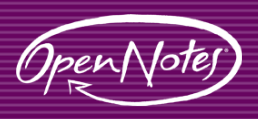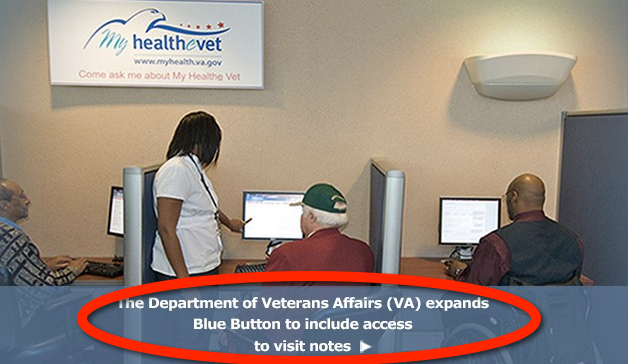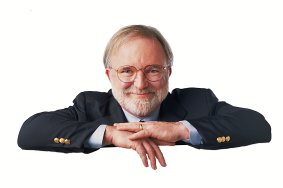 Updated Sept. 6: I’d forgotten that as we posted in June, Cleveland Clinic announced open access too, adding a half million patients to the total.
Updated Sept. 6: I’d forgotten that as we posted in June, Cleveland Clinic announced open access too, adding a half million patients to the total.
Big news is emerging from the OpenNotes® project: big institutions are making patient access to the medical record Standard Operating Procedure.
For the first time, an unprecedented number of patients and families – over 1.3 million 1.8 million so far – are enabled to take a big step toward full partnership in their care, by having access to the information their clinicians wrote. And there’s more on the way in the next year.
This is great news for participatory medicine! We’ve often touted here the news from the OpenNotes study. If you’re new to it, here’s our post announcing the results last fall, and here’s the project’s website. The results were big news for participatory medicine because they said that when patients can see their doctors’ visit notes – unedited – things go better. That’s important, because as SPM co-founder Dr. Danny Sands says, “How can patients participate if they can’t see what I see?”
The OpenNotes study was limited to letting us see the visit notes written by our primary physicians, but the participating medical centers (and others) heard the message loud and clear, and they’re going LARGE on it.
Added 9/6: In addition to Cleveland Clinic, these providers are on board:
1. Study participant Geisinger Medical Center has opened visit notes to over 100,000 patients.
From the OpenNotes project site:

2. The Veterans Administration has opened progress notes to a million patients.
We reported on it here in January.

3. My primary hospital, Boston’s Beth Israel Deaconess Medical Center, is opening notes from all specialities.
BIDMC was the lead institution for the OpenNotes study; it’s home to principal investigators Jan Walker RN, MBA and Tom Delbanco MD. They announced last year that they’d open visit notes from all primary physicians, but they’ve gone one better – a BIG one better: now, all specialties are coming on board.
From their site:
4. Next year: INPATIENT NOTES!
Regular readers will recall that last December, SPM member Marge Benham-Hutchins (PhD, RN) was astounded that although she’d followed her husband’s data via his patient portal while he was an outpatient, her access was shut off when he got worse and became an in-patient.
Well, this too shall pass. I’m thrilled to say that my hospital is leading the charge. Look:
Read the full announcement on their site.
What you can do
Medicine is changing, but it’s a big big industry and a lot of people don’t like to be the “first penguin in the water.” (If you don’t know that metaphor, see this page about it. It refers to people’s aversion to jumping in first, when there might be unknown risks.)
Well folks, several whales have jumped in, and they’re telling their friends “The water’s fine!”
Whether you are a clinician or a patient, pass the word about this initiative.
- If you’re a patient, ask for it by name: “Do you have that OpenNotes thing here? Can I see my doctor’s notes from home?” (This is important, because in my speaking sessions I often hear doctors say “Well, my patients aren’t asking for it.” Go thou and ask!)
- If you’re a provider, tell management this is the coming thing – and it’s arriving NOW.
- Show them our post on the results – it did not ruin doctors’ lives, and everyone did better.
- Show them the full text of the article in the Annals of Internal Medicine.
- Whoever you are, tell management it’s now a competitive business issue.
- The article says 85-89% of patients in the study said access to notes would be a factor in their choice of doctor and hospital.
- So, if you don’t offer it, someone across town will. Let the chips fall where they may.
 Subscribe to OpenNotes project updates at the bottom of their page [right], and follow the project on Twitter at @MyOpenNotes.
Subscribe to OpenNotes project updates at the bottom of their page [right], and follow the project on Twitter at @MyOpenNotes.
“The future has arrived. It’s just not evenly distributed.”
 This now-famous line by futurist William Gibson was quoted years ago by “Doc Tom” Ferguson [right], founder of our movement, who died in 2006. I never met him, but I can’t help envisioning him grinning from ear to ear at this news – and I imagine he’d already be dishing out his next ideas: what e-patients will do with all this.
This now-famous line by futurist William Gibson was quoted years ago by “Doc Tom” Ferguson [right], founder of our movement, who died in 2006. I never met him, but I can’t help envisioning him grinning from ear to ear at this news – and I imagine he’d already be dishing out his next ideas: what e-patients will do with all this.
Let the games begin.
_____________
This blog’s interest in the OpenNotes study is not coincidental; the study was funded by Robert Wood Johnson Foundation’s Pioneer Portfolio, which also sponsored “Doc Tom’s” seminal document “e-Patients: How they can help heal healthcare,” which you can download at top right of this site, in English and now in Spanish. In 2009 Tom’s followers formed the Society for Participatory Medicine; this is its blog, and JoPM is its journal.
My personal thanks go to the Foundation and its Pioneer Portfolio; as a change agent myself, I have the deepest appreciation for people who see the future and are successful at helping create it.








This is great news and I’m looking forward to the spread of this movement.
FWIW, upon my request my own EMR developer (MD-HQ) has made it possible for me to share complete chart notes, with default set to “share”.
So now I’m going OpenNotes too…but in my case, it’s mainly family caregivers and other proxies who are viewing the notes, rather than the elderly patients themselves.
Exciting stuff. We are Kaiser patients (as are some of my geriatric patients);hope KP goes OpenNotes soon.
Great to hear from you, Leslie!
Increasingly it seems obvious that elders are a big part of the future of healthcare: as we get better and having people NOT die, they get old, duh. A doc blogged this year that half the people who’ve EVER reached age 65 are still alive today …
I myself am 63-1/2, and when Social Security was enacted that was the median life expectancy (the time when we expected HALF of men to be dead). Today, guys my age don’t quite look like they’re approaching the grave.
Have you heard any estimates of when we’ll get to where half of ALL LIVING HUMANS are over 60?